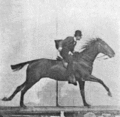
Back وسائط متعددة Arabic Multimedia AST Multimedia Azerbaijani Мультымедыя Byelorussian Мультымэдыя BE-X-OLD Мултимедия Bulgarian মাল্টিমিডিয়া Bengali/Bangla Multimedija BS Multimèdia Catalan Multimédia Czech
|
Multimedia is a form of communication that uses a combination of different content forms, such as writing, audio, images, animations, or video, into a single presentation. This is in contrast to traditional mass media, such as printed material or audio recordings, which only feature one form of media content. Popular examples of multimedia include video podcasts, audio slideshows, and animated videos. Creating multimedia content involves the application of the principles of effective interactive communication. The five main building blocks of multimedia are text, image, audio, video, and animation.[1]
Multimedia encompasses various types of content, each serving different purposes:
- Text - Fundamental to multimedia, providing context and information.
- Audio - Includes music, sound effects, and voiceovers that enhance the experience. Recent developments include spatial audio and advanced sound design.
- Images - Static visual content, such as photographs and illustrations. Advances include high-resolution and 3D imaging technologies.
- Video - Moving images that convey dynamic content. High-definition (HD), 4K, and 360-degree video are recent innovations enhancing viewer engagement.
- Animation - the technique of creating moving images from still pictures, often used in films, television, and video games to bring characters and stories to life.
Multimedia can be recorded for playback on computers, laptops, smartphones, and other electronic devices. In the early years of multimedia, the term "rich media" was synonymous with interactive multimedia. Over time, hypermedia extensions brought multimedia to the World Wide Web, and streaming services became more common.
- ^ "Introduction to Computer Information Systems/Multimedia - Wikibooks, open books for an open world". en.wikibooks.org. Retrieved 2023-01-22.
© MMXXIII Rich X Search. We shall prevail. All rights reserved. Rich X Search





